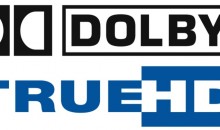What is Dolby Atmos? Just the Facts
With all the surround sound formats on the market and in our AV equipment, it’s not surprising that when a new one comes out it might slip by unnoticed. People are still asking us: What is Dolby Atmos? Dolby Atmos is one of the newest audio platforms showing up in movie theaters and in our homes.
Dolby Atmos Basics
It debuted in 2012 and ‘s unique in that it claims to work well with almost any speaker configuration. It works extremely differently from the THX certifications of years gone past. That relied heavily on standardization and adherence to specific guidelines. Dolby Atmos is a system that combines products, services, and technologies.
And, because it claims expandability, Dolby Atmos also aims to be one of the last audio systems a movie theater will ever need.
Dolby Atmos vs Dolby Digital or THX
Dolby Atmos differs greatly from the Dolby Digital or THX audio methods of delivering content. For one, the system supports up to 128 simultaneous and lossless audio streams. These can function as individual channels (like in a 7.1 soundtrack). They can also work as individual sound elements that get placed within the mix as well. Dolby Atmos also allows for up to 64 discrete speaker feeds.
Yes, you heard that right. However, we have yet to see a theater or content creator crazy enough to utilize all 64.
Dolby Atmos also provides something other surround systems don’t: discrete point source sound reproduction. Two main things could come out of this. First, you can now have overhead sound effects (something that’s very hard to simulate using older surround sound technology). You can also have sounds that originate from discrete sources in specific theater locations.
What is Dolby Atmos? Two Words: Overhead Sound
While it may just sound like somebody is jamming more speakers down our throats, overhead sound isn’t a bad idea for theaters. It’s a harder sell for home theaters, however. Still, it has potential in the local cineplex. Traditionally, in theaters, a single horizontal plane currently generates all of the sounds. It extends both in front of, and behind, the listener.
That means that for any audio overhead—a helicopter hovering overhead or a rocket being shot from behind—other surround sound formats simulate the effect by shifting the phase of the speakers. A quick pan from the rear surrounds to the front with a bit of high-frequency EQ is all you get.
Having more elevated speakers helps, but there’s nothing like having an actual speaker to handle that sound. As films progress into more of the third dimension, filmmakers might be a bit more enthusiastic in experimenting with the same expansive 3D audio. Atmos seems to offer that option. Because of the way Dolby designed Atmos, DSP allows for the use of an ever-expanding array of speakers.
Point Source Effects
Other surround sound formats want the side and rear speakers to be diffuse. Surround Left and Right speakers are discrete. However, the surround field is, by other formats’ design, never completely oriented for point-source effects that occur in a very specific location. A theater with fewer speakers offers less specific point source surround effects. DSP (digital signal processing) can compensate to do the best job possible. As a theater adds more loudspeakers, the Atmos system will automatically compensate to deliver even more precise audio.
Where this shows up is in the way that on-screen characters might interact with elements that are supposedly in the theater space. Instead of having to synthesize a sound using a few channels of information, Dolby Atmos will allow for a greater level of pinpointing, particularly when that information is nearer to the screen or higher up in the room.
Can a New DSP Improve Existing Theaters?
One of the hard sells in bringing a new theater decoding system to market is the effect it will have on existing theaters. What’s got the industry abuzz about Dolby Atmos is the way in which it can utilize existing loudspeakers and systems. In fact, Atmos claims it will make these systems better by adding such things as better bass management for surround channels and room equalization.
The idea is that movie theaters would eventually want to upgrade their speakers and even add more. Currently, surround speakers don’t need to be able to handle full-range audio as the main speakers do. There simply isn’t a lot of information making its way to the surrounds, so theaters can cut back a bit on these speakers. With Atmos, the surround speakers become more important. Hopefully, theater owners would then find enough incentive to up their game and match the potential of the system with new equipment. Another benefit for point source speakers is that a specific sound sent to a specific location doesn’t suffer from the effects of reproducing sound via an array.
Converting Existing Speakers for Point Source Effects
Also, if you look around most theaters today, there are a series of speakers both behind and along the sides of the theater. Currently, these speakers simply delay audio properly for 7.1-channel reproduction.
But with Dolby Atmos, they would be instantly available for point-source effects and greater surround sound definition. The system instantly adapts to whatever speakers exist currently and brings them into compliance with the new capabilities of the multi-channel soundtracks. Dolby calls the existing 5.1 or 7.1 streams “Beds” and continues to view those as important for backgrounds and non-specific effects.
The other sounds it refers to as “Objects”. These objects are overlaid with the beds and the result is sent to the speakers. The DSP and the Dolby Atmos CP850 Cinema Processor decode everything in its proper place. Here’s what that looks like:
It’s the rendering algorithm in the processor that does all the magic. Because of the intelligence built into the system, authoring can be done once, and nearly any theater configuration can be made to put out the best representation of the content as it was designed.
Coming to a Theater Near You
The two things that need to happen for Dolby Atmos to have complete adoption is to see it used in both the authoring process as well as the theaters. When those two areas align, you’ll start to see the technology really take off. Whether Atmos takes off in the home remains to be seen (it is certainly popular with niche users, but most people still don’t know what Atmos is). Dolby has put out guidelines for home Atmos reproduction and they are not as flexible as the theaters. So, if you want to install Atmos in your theater, you can either pick one of their predetermined places for overhead speakers or buy their upward-firing Atmos speakers designed to bounce sound off the ceiling.
That is if you want to buy more speakers. It’s hard enough to convince most of my friends and family to adequately support 5.1 in their homes. The conversation about cutting holes in their ceiling for Atmos speakers is infinitely harder.
So have you experienced Dolby Atmos yet? If you have, let us know via our Facebook page or comment below to let us know what you thought.








Damn, Clint…You’re on top of it yet again! I don’t think the “wife-factor” will allow
me 50 more speakers ;0) But if it were up to me…. Great work, sir!
cosoundman/Audioholics forum
No kidding—you would think everyone coming up with these DSP solutions are under the impression that everyone already has 7.2 surround and is just chomping at the bit to add in more speakers!
Had a denon 5803, quit on me, on the list for merantz 7702, running M&K ultra 150 full set w/ 2 subs. Worked really nice in 7.1, how do you think it’ll work w/ atmos? Any suggestions?
I’ve got the AVR 5308CI(A). Great receiver! That AV7702 looks pretty sweet, though I wonder how many people will actually go full-on with Atmos. You may be trend-setting in your area!
What does A T M O S stands for. Please state the full meaning of this acronyms.
It’s just a brand name. It doesn’t stand for anything (not an acronym) but it’s derived from the word “atmosphere” which would appear relevant.